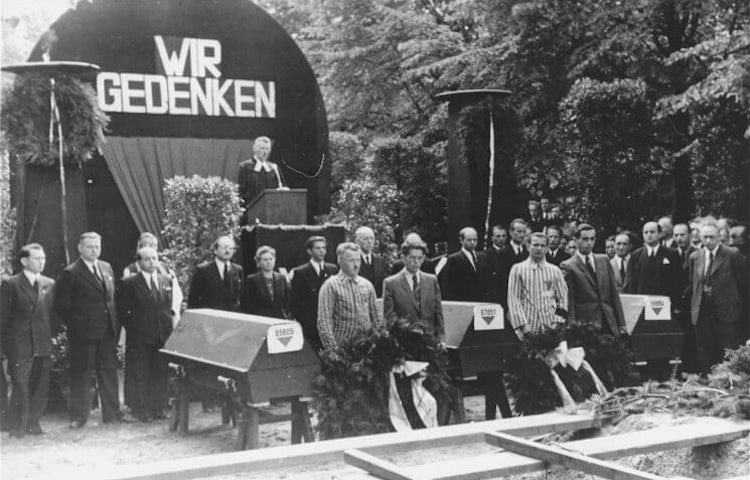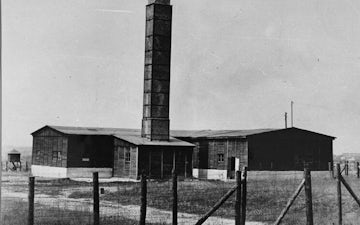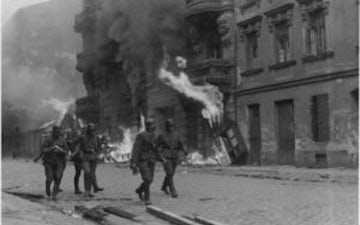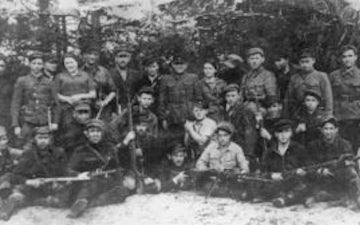
As the Eastern Front collapsed in the summer of 1944, the Nazis began to move inmates in the camps established in occupied Poland west, toward and into the Reich. As autumn turned to winter, thousands of starving prisoners were evacuated west, mostly on foot (sometimes in uncovered wagons) and dressed in nothing more than their thin camp uniforms. German troops were ordered to shoot any prisoners who could not keep pace or disembark. In addition, thousands perished due to starvation, exhaustion and exposure: temperatures that winter dropped to below -17 Celsius (0 Fahrenheit). These movements have become known as the death marches.
The evacuations were carried out for three reasons: to prevent the Red Army from liberating witnesses to Nazi atrocities (as had happened at Majdanek in July 1944); to preserve the possible labor value of the prisoners; and in the belief that Jewish inmates might be used as hostages or bargaining chips in negotiations with the Allies.
Accounts from the Death Marches are among the most harrowing of the Holocaust. Survivors recall a grueling pace and constant brutality. The route of one of the final death marches from Auschwitz, in January 1945, can be traced by following the mass graves of those found by Polish villagers and townspeople along the route.




